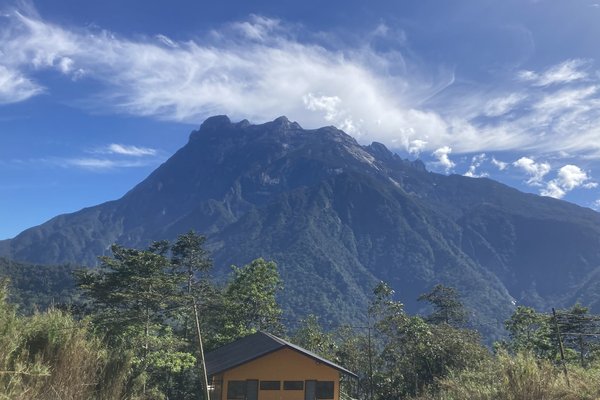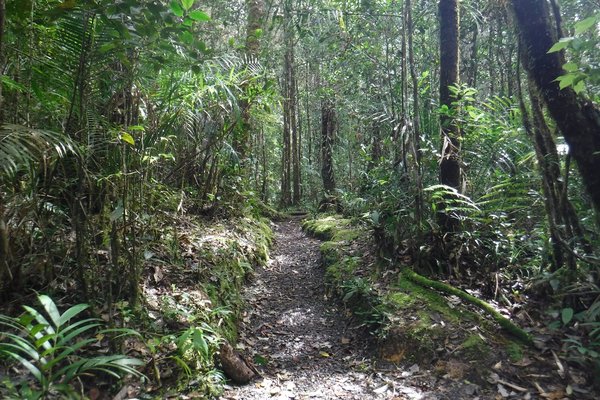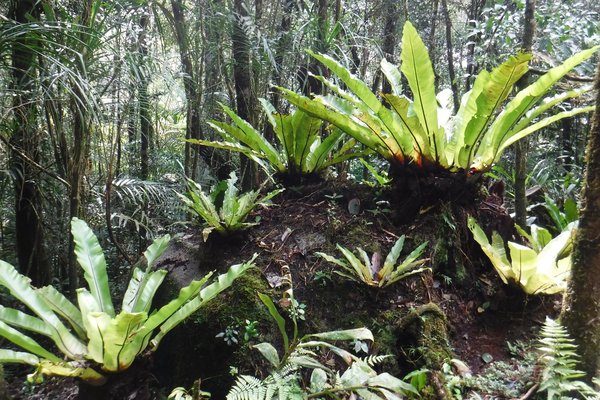Malaysia
Kinabalu Park
Kinabalu Park comprises an array of flora-rich ecosystems across different altitudes and diverse geology.
The park is dominated by Mount Kinabalu, one of the highest mountains in Southeast Asia at 4,095 meters. It is known for its many carnivorous plants and orchid species. It is also home to a multitude of endemic animal species, including the Kinabalu Giant Red Leech and Kinabalu Giant Earthworm.
Community Perspective: the site seems underreviewed, though it is visited regularly. Els describes a disappointing day trip, while birder Frédéric enjoyed himself better across two days. Both visits were restricted to the bottom of the mountain. Nafis was the first one to describe a climb of the mountain.
Site Info
Official Information
- Full Name
- Kinabalu Park (ID: 1012)
- Country
- Malaysia
- Status
-
Inscribed 2000
Site history
History of Kinabalu Park
- 2000: Inscribed
- Inscribed
- Type
- Natural
- Criteria
- ix
- x
Links
- UNESCO
- whc.unesco.org
- Official
-
- sabahparks.org.my — Kinabalu Park
All Links
UNESCO.org
- whc.unesco.org — whc.unesco.org/
Official Website
- sabahparks.org.my — Kinabalu Park
News Article
- June 10, 2015 thestar.com.my — Foreigners may get three months jail if charged and found guilty of obscene act at Mount Kinabalu
- June 5, 2015 abc.net.au — Mount Kinabalu earthquake: Climbers injured, stranded as magnitude-6.0 quake rocks Malaysia
- June 9, 2006 dailyexpress.com.my — Fiasco at World Heritage site
Community Information
- Community Category
- Wildlife habitat: Flora
Travel Information
Recent Connections
-
Notable examples of Crown shyness
Crown shyness can be observed in the lo…
-
Perfect Inscriptions
2000 -
UNESCO Triple Crown
Connections of Kinabalu Park
- Individual People
-
-
Sir Stamford Raffles
AB review of Kinabalu states - "Rafflesia, a rare parasitic plant is also found".
-
- Geography
-
-
Hot Springs
At Poring -
Disputed territories
The Philippines has a "dormant" claim on the territory of Sabah on the grounds that it was leased to the British North Borneo Company by the Sultan of Sulu (who had been given it by the Sultan of Brunei)without rights of transference. either to the British norr by them to Malaysia. The issue has re-arisen recently because of conflicting maritime claims in the Sulu Sea -
Territorial Highest points
Gunung Kinabalu 4101m/13453ft -
World's Highest Topographically isolated summits
Mt Kinabalu 19th most isolated (2513/4095) -
World's most prominent mountains
Mt Kinabalu 20th most prominent (4095m/0/MSL)
-
- Trivia
-
-
Tourist Treks
2 day trek -
Fatal Accidents or 'disasters'
2015 Sabah earthquake: Eighteen fatalities were reported, all occurring on Mount Kinabalu.See en.wikipedia.org
-
Built or owned by Japanese
Kinabalu Park's Poring Hot Spring Garden was discovered and developed by Japanese Army during WWII for their recreation.
-
- Ecology
-
-
Notable examples of Crown shyness
Crown shyness can be observed in the lower montane forests. Tree Species: Borneo Camphor (Dryobalanops aromatica) and several species of Eucalyptus. In the dense, humid slopes of Mount Kinabalu, the crown shyness of the Dipterocarp canopy is often accentuated by the mist and clouds that drift through the gaps, creating a "halo" effect around individual tree crowns.
-
Rainforests
"rich tropical lowland and hill rainforest (dominated by diptocarps) amounting to 35%" (AB ev) -
Granite rock formations
"Kinabalu is a granite intrusion formed 15 million years ago by the hardening of a mass of molten rock that rose beneath the sedimentary rocks of Borneo’s Crocker Range" (AB ev) -
Living Fossils
The mountain flora has diverse 'living fossils' such as the celery pine and the trig-oak, the evolutionary link between oaks and beeches. (AB ev) -
Notable examples of island gigantism
Rafflesia keithii, the biggest flower in the world -
Orchids
"The presence of 1,000 orchid species, 78 species of Ficus, and 60 species of ferns is indicative of the botanical richness of the property. " (OUV) -
Strepsirrhini
slow loris -
Serpentine soil
"Ultramafic (serpentine) rocks cover about 16% of the park" (OUV) -
Cloud forest
-
Over 300 bird species
326 (AB ev) -
Carnivorous plants
the richest collection in the world for the Nepenthes pitcher plants (five of the thirteen are found nowhere else on earth) which reach spectacular proportions (the largest-pitchered in the world being the endemic Nepenthes rajah: an insectivorous pitcher plant. It is endemic to Mount Kinabalu and neighbouring Mount Tambuyukon in Sabah (wiki)See en.wikipedia.org
-
- Damaged
-
-
Affected by El Niño
The high species diversity of Kinabalu results from a number of factors ... the frequent climate oscillations influenced by El Niño events (AB ev)
-
- World Heritage Process
-
-
Perfect Inscriptions
2000 -
First inscriptions
Malaysia: two inscriptions in 2000, with Kinabalu Park as the lowest number
-
- Religion and Belief
-
-
Sacred Mountains
Mount Kinabalu, sacred to the Dusun
-
- Human Activity
-
-
Canopy Walkways
Canopy Walk at Poring Hot Springs: "There are 3 circuits of canopy walkways with a total length of 373.6 meters and a height of up to 41 meters depending on the slope of the land below. The walkway is open to the public in May 1990. The first circuit has a 'Y' shape with a total length of 157.6 meters, and has been established as a tourist walkway."
-
- Constructions
-
-
Via Ferrata
The World's highest at 3776 meters
-
- WHS on Other Lists
-
-
IUGS Geological Heritage Sites
Mount Kinabalu Neogene Granite -
Global Geoparks
Kinabalu UNESCO Global Geopark -
World Heritage Forest Programme
-
ASEAN Heritage Parks
-
Located in a TCC Territory
Sabah -
World Biosphere Reserves
Crocker Range, in the south of Kinabalu -
Biodiversity hotspot
Sundaland -
WWF Global 200
Terrestrial, Montane Grasslands and Shrublands: (107) Kinabalu Montane ScrubSee web.archive.org
-
Centres of Plant Diversity
SEA 24 Kinabalu Park - "Floristically species-rich and identified as a globally important Centre of Plant Endemism, Kinabalu Park contains an estimated 5,000-6,000 vascular plant species including representatives from more than half the families of all flowering plants." -
UNESCO Triple Crown
-
- Timeline
-
-
Miocene
In geological terms, it is a very young mountain as the granodiorite cooled and hardened only about 10 million years ago.
-
- Science and Technology
-
-
Botanical Gardens
"Formerly known as Mountain Garden, the Botanical Garden serves as a refuge for threatened species where the plants produced in the garden will eventually be returned to their natural habitat. As of 2005, not less than 3,200 plant specimens comprising of 400 species grow in the garden. Botanical Garden plays an important role as a nature education center for the public by bringing the plants to the visitors rather than bringing the visitors to the plants in locations that are often inaccessible. More importantly, it ensures that the natural habitat of the plants remains undisturbed."
-
- Visiting conditions
-
-
Foreigner prices
Non-Malaysians pay RM50 to enter the park. (Malaysians pay RM10).
-
- WHS Names
-
-
Named after a Mountain
Kinabalu 4095m
-
News
- thestar.com.my 06/10/2015
- Foreigners may get three months ja…
- abc.net.au 06/05/2015
- Mount Kinabalu earthquake: Climber…
- dailyexpress.com.my 06/09/2006
- Fiasco at World Heritage site
Recent Visitors
Visitors of Kinabalu Park
- Adrian Turtschi
- Alex Goh
- Alex Marcean
- A. Mehmet Haksever
- Artur Anuszewski
- ashombob
- Atila Ege
- Bernard Joseph Esposo Guerrero
- Bin
- Boj
- Bram de Bruin
- Brett Baumann
- c82wc1
- Carlo Sarion
- Celina Nanbara
- Chalamphol Therakul
- chiuliqi
- Chunsian01
- Corinne Vail
- CugelVance
- Dimitar Krastev
- disnsam
- DjhMck
- Elf21
- Elisabeth Fransisca Situmorang
- eljx1988
- Els Slots
- Erik Jelinek
- Errol Neo
- Eva Kisgyorgy
- Fan Yibo
- Felicité
- Frédéric M
- Frederik Dawson
- Gary Arndt
- Gernot
- Grzegorz Andruszkiewicz
- Harry Mitsidis
- Iain Jackson
- ivantham
- Jana and Matt
- Jarek Pokrzywnicki
- Jeanne OGrady
- Joel on the Road
- Jonoprout
- jxrocky
- Kevin247
- Kjlauer
- ko9757
- Kurt Lauer
- Lars Bogstad
- Lee Kai Loong
- Ludvan
- Luis Filipe Gaspar
- Maja
- Marton Kemeny
- MC
- M.HATADA
- Michael Ayers
- Mikko
- MMM
- Morodhi
- Mtlmr
- Nafis N
- Naim Y
- Nihal Ege
- palka25
- Peter Lööv
- Philipp Leu
- Philipp Peterer
- Pieter Dijkshoorn
- Pink Bunny
- Randi Thomsen
- ReallyDeepThoughts
- Riccardo Quaranta
- Rob Wilson
- Roman Bruehwiler
- Sergio Arjona
- Shandos Cleaver
- Sijia
- Solivagant
- Svein Elias
- Szabolcs Mosonyi
- Szucs Tamas
- Tamara Ratz
- Tevity
- Thomas Buechler
- Thomas van der Walt
- triath
- Vanessa Buechler
- Vincent Cheung
- Wojciech Fedoruk
- Xiong Wei
- Xiquinho Silva
- Zoë Sheng
Community Reviews
Show full reviews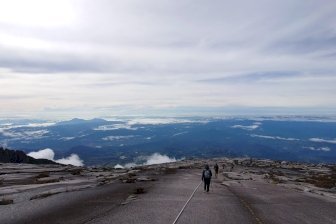
I visited Kinabalu Park back in September 2022 with my wife, and we decided to climb Mount Kinabalu as part of our visit. The cheapest climbing option was to book directly via the official site (sabahparks) for the climbing permit and accommodation booking. It's worth pointing out that the climbing permit is limited and always in high demand, especially outside the rainy season (basically avoid Nov - Feb), and the permit booking slots are open in a 6-month window. So, if you're planning to climb the mountain, be on the lookout for the announcement once the booking window is open. The safest bet is to follow Sabah Parks official FB page. They will have a set allocation for independent visitors (booking done through sabahparks.com reservation portal) and visitors via agencies if I'm not mistaken.
As we flew to Kota Kinabalu from Kuala Lumpur and didn't plan to rent a car or take a bus, we opted to book through an agency. The package included return transportation to Kinabalu Park and stops at Jambatan Tamparuli, Desa Dairy Farm, Kundasang market, and Poring Hotsprings. We decided to skip Poring Hotsprings so that we could have more time spent at the park itself.
On the first day, we arrived at Kinabalu Park around 3pm, greeted by clouds concealing the Kinabalu summit. After checking in at Sutera Sanctuary Lodges, the only accommodation within the park, we took a walk along the one-way road, spotting Bornean Stubtail, Mountain Wren-Babbler, and Ochraceous Bulbul. As …
Keep reading 0 comments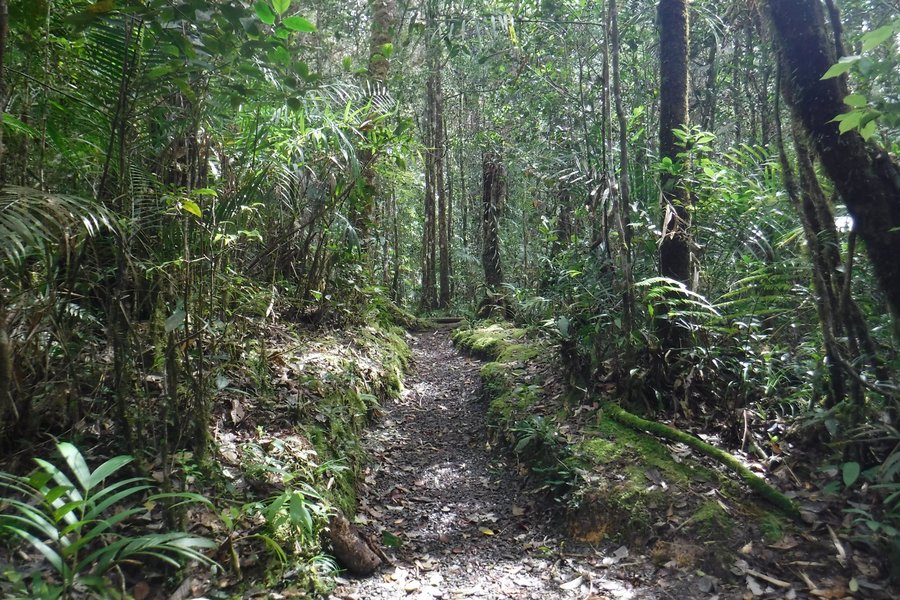
Kinabalu Park is included on the World Heritage List mainly because of the extraordinary plant diversity resulting from its particular topography. In fact, Mount Kinabalu creates a gradient of climatic and edaphic conditions enabling an incredible number of plants to thrive. The isolation of certain populations resulting from this topography has also favoured the emergence of a large number of endemic species. The best way to visit the park, as described in some of the reviews here, is therefore to reach the summit and tackle this climatic and topographical gradient yourself. Unfortunately, although I'm quite the target audience for such an attraction, the staggering cost of the excursion put me off and I won't be describing a trip to the summit to you. Indeed, it's compulsory to reach the summit in two days with a guide, and only one company has a monopoly on accommodation on the mountain. As a result, a night in a basic dormitory can cost upwards of $500, to which must be added park access fees and the guide's fee. Nevertheless, there's plenty to do at the bottom of the mountain.
I visited the park over two days in February and March 2023. It's easy to get to the park from Kota Kinabalu thanks to the minibuses that frequently leave the city on their way to Ranau. However, on the morning of my departure, the only other passengers present at the minibus stop were an American couple on their honeymoon who had been waiting for other …
Keep reading 0 comments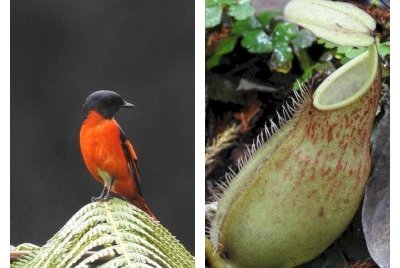
Well, 141 community members visited before me and no more than 3 managed to write a short review. The last review was in 2012. None have submitted photos, and the main site photo we had was from the Public Domain. Still, the site has achieved a decent 3.38 rating. So is there something wrong with Kinabalu Park?
Overall, I think it is a worthy WHS, but not a good day trip destination. The higher scores may have come from people who climbed the mountain. I think the benefit of climbing is seeing the change in vegetation, and that’s also Kinabalu’s main OUV.
Like most others, I had to make do with a few hours around the Park Headquarters. The entrance fee for foreigners now is 50 ringgit, which I find a lot – certainly compared to Gunung Mulu where you can enter for 5 days for 30 ringgit. And the visiting conditions at Kinabalu are much worse: I didn’t get a map or any instructions upon entering (they just took the money), trails don’t look maintained, and there’s car traffic, and poor signage. The only part I liked well enough was the small Botanical Garden, which has an additional entrance fee! I wanted close-up views of pitcher plants, and they have several species in a flowerbed accompanied by a large sign stating “Protected Plant. Do not Disturb”.
I suspect that one of the reasons for the lack of photos is that the peak of Mount Kinabalu is …
Keep reading 0 comments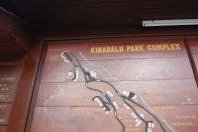
There are two vantage points where a traveler can see the inscribed area --- the National Park Headquarters, and Poring Hot Springs in Ranau(What people say about Poring Hot Spring is true - its too expensive, obviously a tourist trap. A bit elitist for budget travelers like me). I never got to climb it. But, going to those two vantage points proved to be still difficult for DIY travelers. For one, asking directions from locals was confusing. It seems that even those from the area don't know much about the ins and outs of seeing the sites. Many would suggest taking a tour, or by renting a taxi, convincing you that its the best way to go to those places. However, buses are available that would lead to the gates of Kinabalu Park HQ. Nevertheless, I felt that the place is truly gifted and is well deserved of a WHS status.
Keep reading 0 comments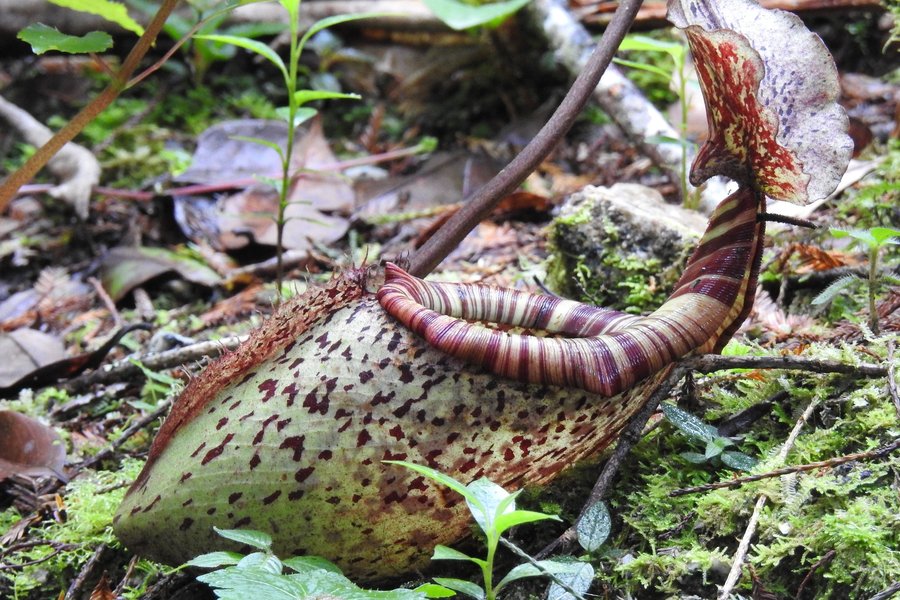
Really deserved the title as one of the WHS. The park is beautiful, and as I happen to manage to climb the Kinabalu Mountain, I could see more of the park area, which is just stunning.
I managed to see a beautiful waterfall from afar... and unfortunately it's quite unreachable there... but I'm glad it's part of the park, so it is also considered as a heritage :-)
Keep reading 0 comments
For a spectacular view if the mountain, take the 7am flight from Kota Kinabalu to Sandakan (home of the orang-utans and turtles). That early the air is clear for an uninterupted view.
We enjoyed taking the canopy walkway near the Poring hot springs,to stroll through the treetops.
The brilliant orchid flowers made a colourful display in the forest.
Buses from Kota Kinabalu and Sandakan stop at the park entrance, but the it is such a large area that you really need you own transport to get around.
Keep reading 0 comments
